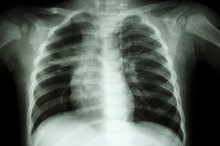What does fact checked mean?
At Healthfully, we strive to deliver objective content that is accurate and up-to-date. Our team periodically reviews articles in order to ensure content quality. The sources cited below consist of evidence from peer-reviewed journals, prominent medical organizations, academic associations, and government data.
The information contained on this site is for informational purposes only, and should not be used as a substitute for the advice of a professional health care provider. Please check with the appropriate physician regarding health questions and concerns. Although we strive to deliver accurate and up-to-date information, no guarantee to that effect is made.
Breathing Exercises After Heart Surgery
Recovering from heart surgery can take weeks or months depending on your health condition. But learning how you can help prevent complications after leaving the hospital is critical to your recovery.
If you are experiencing serious medical symptoms, seek emergency treatment immediately.
By practicing simple breathing exercises at home, you will speed up your recovery time, reduce the likelihood of developing a serious infection and improve your lung function. While breathing exercises are beneficial, consult your doctor before beginning any exercise routine.
Pursed Lip
Pursed lip exercises release trapped air in your lungs, move fresh air into your lungs and relieve symptoms of shortness of breath by slowing your pace of breathing.
**Inhale through your nose and hold it until for a count of one.
** Purse or pucker your lips as if you were going to blow a whistle and breathe out slowly for a count of two. Don’t blow the air out; let it escape on its own, the Lung Association advises.
- Pursed lip exercises release trapped air in your lungs, move fresh air into your lungs and relieve symptoms of shortness of breath by slowing your pace of breathing.
- Inhale through your nose and hold it until for a count of one.
Belly Breathing
Breathing Exercises After Pneumonia
Learn More
Belly or diaphragmatic breathing uses your abdominal muscles to help the diaphragm empty air from your lungs. Your diaphragm is a large muscle below your lungs largely responsible for respiration.
The breathing technique uses less effort to breath, helps slow your breathing rate and opens the air passages in your lungs to improve breathing. Begin by lying on your back with a pillow under your knees. Place one hand on your upper chest and the other on your stomach just below your rib cage. Inhale slowly through your nose until you feel your stomach pushing against your hand. Ensure your chest does not move.
Tighten your stomach muscles, purse your lips and exhale slowly through your mouth while counting to six. Repeat the exercise five times. Also, try the same exercise while lying on your side, sitting in a chair or standing up.
- Belly or diaphragmatic breathing uses your abdominal muscles to help the diaphragm empty air from your lungs.
- Also, try the same exercise while lying on your side, sitting in a chair or standing up.
Incentive Spirometer
An incentive spirometer is a breathing device that measures how well you are able to breathe deeply 2.
By taking deep breaths, you are helping to open the air passages in your lungs to keep your lungs healthy. Deep breathing also helps eliminate mucous and avoid serious infection or pneumonia after heart surgery.
To use the device, sit and place your lips tightly around the mouthpiece of the spirometer. Breathe in slowly and deeply. The yellow ball in the clear tube portion of the device will rise toward the top of the tube. Hold your breath for as long as possible before exhaling. You will see the ball fall to the bottom of the tube. Rest and repeat 10 times per hour while awake. Keep track of your best effort using the indicator on the side of the tube.
- An incentive spirometer is a breathing device that measures how well you are able to breathe deeply 2.
- By taking deep breaths, you are helping to open the air passages in your lungs to keep your lungs healthy.
Chest Breathing
How to Expand Your Lung Capacity
Learn More
Chest breathing is a deep breathing exercise that will help reduce your risk of lung complications after surgery. Lie on your back and place one hand on each side of your ribs. Breathe in deeply through your nose.
Hold your breath for up to three seconds and then breathe out through your mouth with your lips pursed. Repeat the exercise 10 times.
- Chest breathing is a deep breathing exercise that will help reduce your risk of lung complications after surgery.
- Hold your breath for up to three seconds and then breathe out through your mouth with your lips pursed.
Coughing
Coughing is an important breathing exercise after surgery because it helps remove mucous from your lungs. Sit in a chair and press a towel or blanket against your chest incision. Take 10 deep breaths and then cough twice. Repeat the exercise four times each day for two weeks after leaving the hospital.
- Coughing is an important breathing exercise after surgery because it helps remove mucous from your lungs.
- Repeat the exercise four times each day for two weeks after leaving the hospital.
Related Articles
References
- Sunnybrook Health Sciences Centre: Deep Breathing and Coughing
- Cleveland Clinic: How to Use an Incentive Spirometer
- Holloway EA, West RJ. Integrated breathing and relaxation training (the Papworth method) for adults with asthma in primary care: a randomized controlled trial. Thorax. 2007;62(12):1039-42. doi:10.1136/thx.2006.076430
- Holland AE, Hill CJ, Jones AY, Mcdonald CF. Breathing exercises for chronic obstructive pulmonary disease. Cochrane Database Syst Rev. 2012;10:CD008250. doi:10.1002/14651858.CD008250.pub2
- Yamaguti WP, Claudino RC, Neto AP, et al. Diaphragmatic breathing training program improves abdominal motion during natural breathing in patients with chronic obstructive pulmonary disease: a randomized controlled trial. Arch Phys Med Rehabil. 2012;93(4):571-7. doi:10.1016/j.apmr.2011.11.026
Writer Bio
Julie Saccone is a senior communications specialist and former journalist who began writing in 2003. She works in the health-care industry distilling research findings and complex medical topics for media and trade publications. Saccone has been published in newspapers including the "National Post" and "StarPhoenix." She holds a Bachelor of Arts in journalism from Ryerson University and an honors Bachelor of Science.









